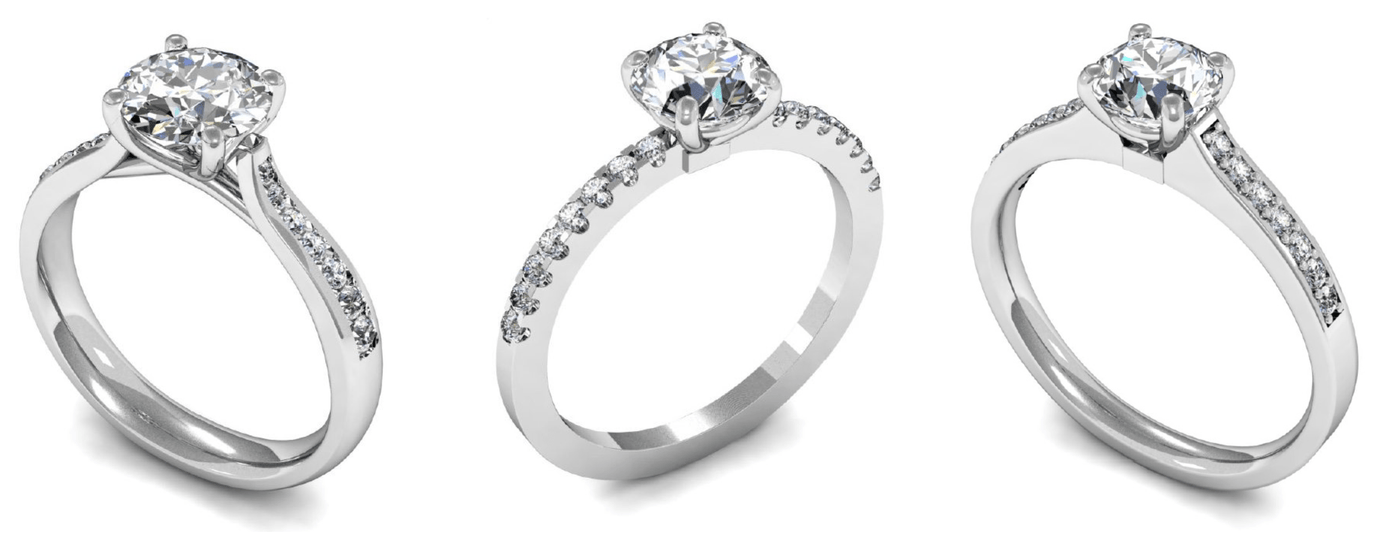How Much Should you Spend on an Engagement Ring?

How Much Are You Supposed to Spend on an Engagement Ring?
The engagement ring is a symbol of love and commitment, and it's often one of the first major purchases a couple makes together. But with so many options available, how much should you spend on an engagement ring? The answer isn't as simple as you might think. In this blog post, we'll explore some factors to consider when determining your engagement ring budget, as well as some common myths surrounding the topic.
The "Three Months' Salary" Rule
You may have heard that you should spend three months' salary on an engagement ring. This rule dates back to the 1930s when De Beers, a diamond company, launched an advertising campaign suggesting that a man should spend one month's salary on an engagement ring. Over time, this figure has increased to three months' salary.
However, this rule is not set in stone and may not be the best guideline for everyone. It's essential to consider your financial situation and priorities before deciding how much to spend on a ring. Spending three months' salary might make sense for some people but could be financially irresponsible for others.

Setting a Realistic Budget
Instead of following the "three months' salary" rule blindly, it's important to set a realistic budget based on your financial situation and priorities. Here are some factors to consider when determining your budget:
1. Your current financial situation: Take a look at your savings, debts, and monthly expenses. Can you afford to spend three months' salary on an engagement ring without going into debt or sacrificing other financial goals?
2. Your future financial goals: Are you planning to buy a house or start a family soon? If so, you may want to allocate more money towards those goals instead of spending it all on an engagement ring.
3. Your partner's expectations: Have an open conversation with your partner about their expectations for an engagement ring. Some people may have their heart set on a specific style or size, while others may be more flexible.
4. The cost of the wedding: Remember that the engagement ring is just one part of your wedding expenses. You'll also need to budget for the ceremony, reception, honeymoon, and other costs.
Debunking Common Myths
There are several common myths surrounding engagement ring spending that can lead to unnecessary stress and financial strain. Here are a few to keep in mind:
1. Bigger is always better: While a larger diamond may be more eye-catching, it's not necessarily more valuable or meaningful. Focus on finding a high-quality stone that fits within your budget rather than trying to impress with size alone.
2. The ring should be a surprise: While some people love the idea of being surprised with an engagement ring, it's not always practical. Involving your partner in the decision-making process can help ensure you choose a ring they'll love and avoid overspending.
3. You have to buy a diamond: Diamonds are traditional for engagement rings, but they're not the only option. Consider alternative gemstones like sapphires, emeralds, or Lab Grown Diamonds if you're looking for something unique and more affordable.
Ultimately, how much you spend on an engagement ring is a personal decision based on your financial situation and priorities. Instead of following outdated rules or trying to keep up with societal expectations, focus on finding a beautiful and meaningful symbol of your love that fits within your budget. Remember that the most important aspect of an engagement is the commitment you're making to each other – not the size or cost of the ring.








